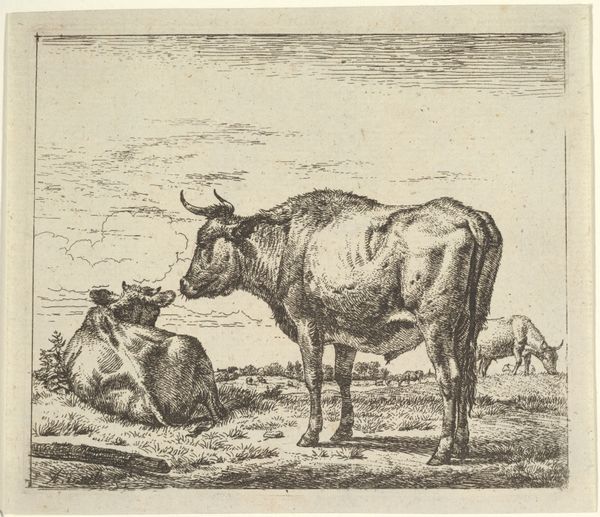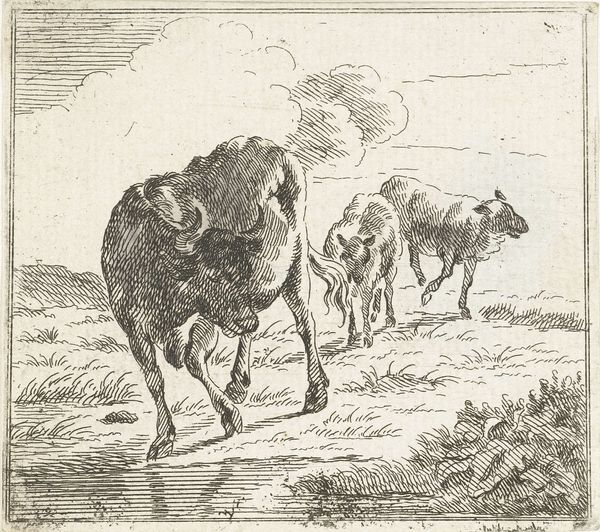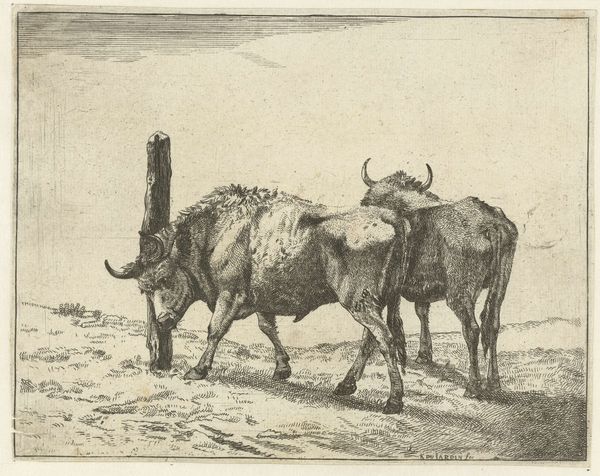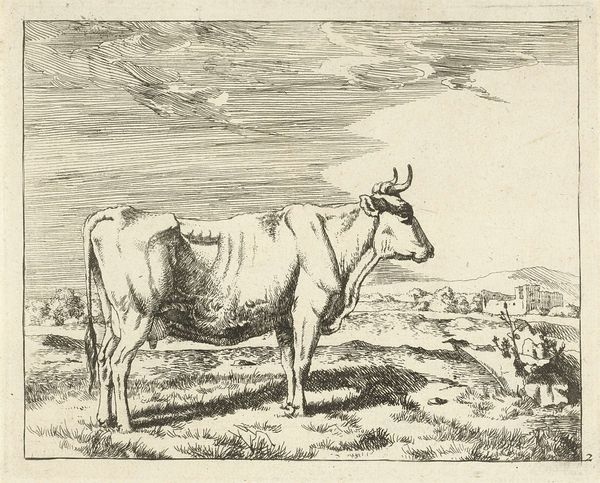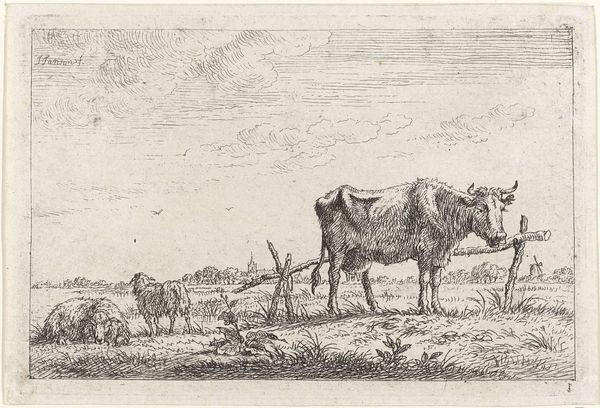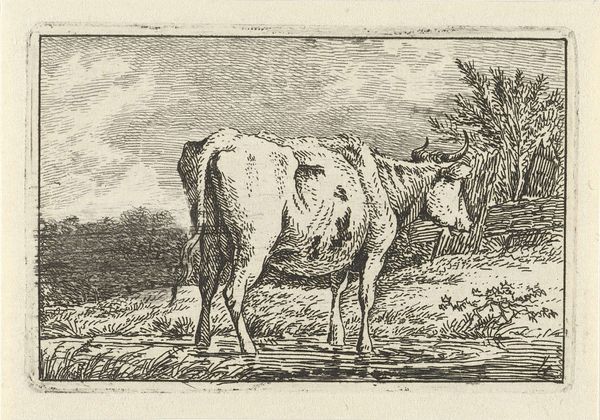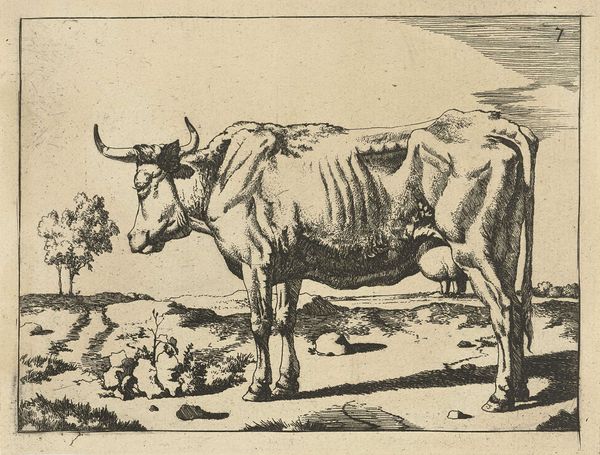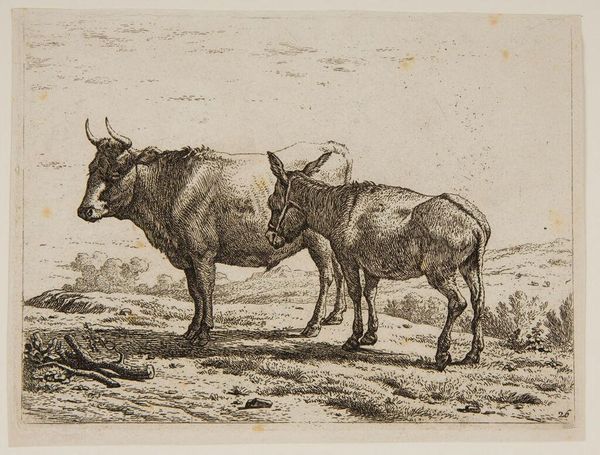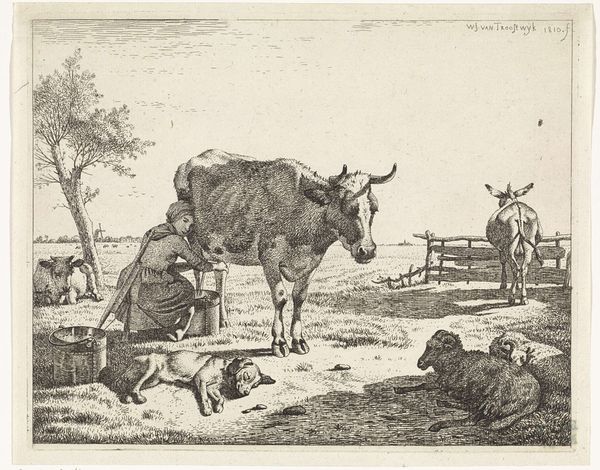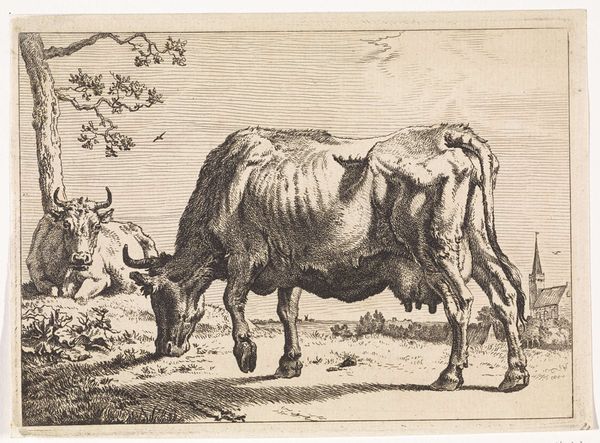
drawing, etching, ink
#
drawing
#
dutch-golden-age
#
pen illustration
#
pen sketch
#
etching
#
landscape
#
personal sketchbook
#
ink
#
sketchwork
#
ink drawing experimentation
#
pen-ink sketch
#
pen work
#
sketchbook drawing
#
genre-painting
#
storyboard and sketchbook work
#
sketchbook art
Dimensions: height 118 mm, width 147 mm
Copyright: Rijks Museum: Open Domain
Curator: What a wonderful image! Here we have "Twee staande koeien" – or Two Standing Cows – created by Marcus de Bye, sometime between 1657 and 1761. It’s an etching, ink and pen on paper and it currently resides here at the Rijksmuseum. Editor: The tonality is quite striking. There’s such a distinct contrast between the heavy cross-hatching defining the cattle against the lightly sketched, almost wispy rendering of the clouds. Curator: Absolutely, and that contrast directs our attention not only to the cows as subject matter, but also to their specific representation as laborers in Dutch society at the time. It reflects an increasing stratification within the agricultural sector. We see this reflected, too, in paintings by artists such as Aelbert Cuyp. Editor: Agreed, there’s something very direct and unembellished in the graphic handling, particularly in the delineation of their forms. See how De Bye articulates musculature through line weight and density? It’s not sentimental at all. The texture in the clouds, for example, relies on hatching in ways very dissimilar to that found in the bodies of the two cows. It brings into relief this contrast of labor. Curator: Indeed. The burdens these creatures bear literally mark them, setting them apart from the landscape around them. Note also how one is yoked, while the other is free – perhaps marking a distinction between kinds of labor and suggesting different gendered experiences as well. Editor: The graphic contrasts contribute to an intriguing compositional tension that draws the eye across the surface – setting the clouds against land and cows. But let's be frank, these are very different textural deployments of ink. What is your theory on such variations of method? Curator: This variance, I suspect, represents De Bye highlighting the vastly different levels of freedom enjoyed, at the time, depending on class and gender within Dutch society. The cows are, in essence, a reflection of their handlers, a marker of relative socioeconomic status. Editor: A compelling argument! I do wonder if the artist may be highlighting just the formal elements, though? Regardless, it does offer us some fertile grounds for future research. Curator: I completely agree! The artwork continues to prompt necessary reflection.
Comments
No comments
Be the first to comment and join the conversation on the ultimate creative platform.
